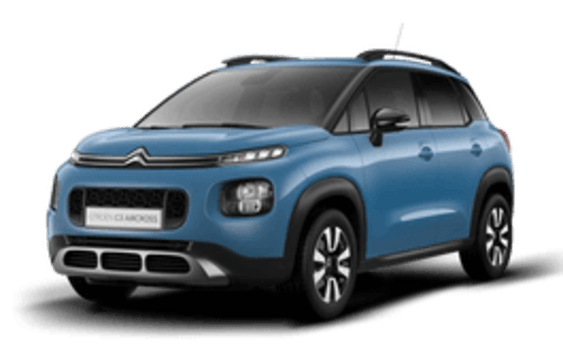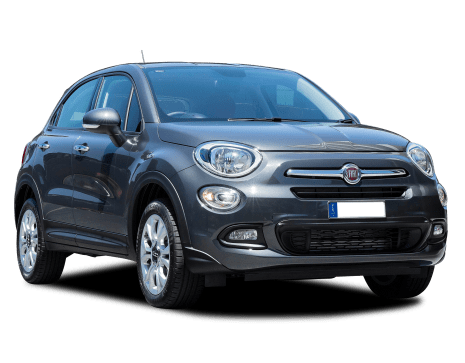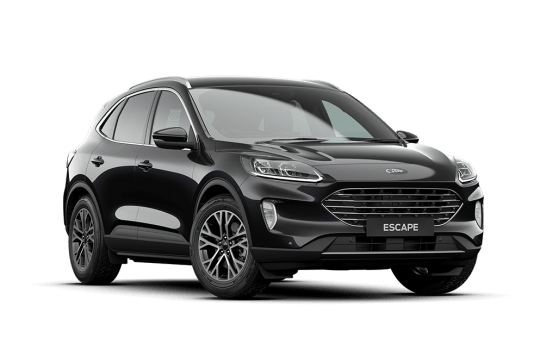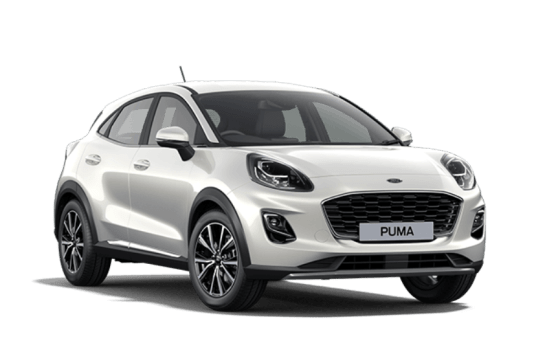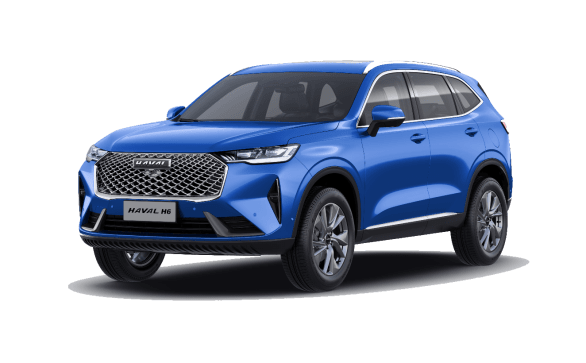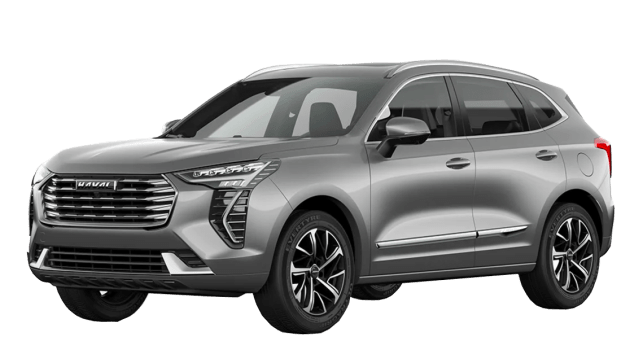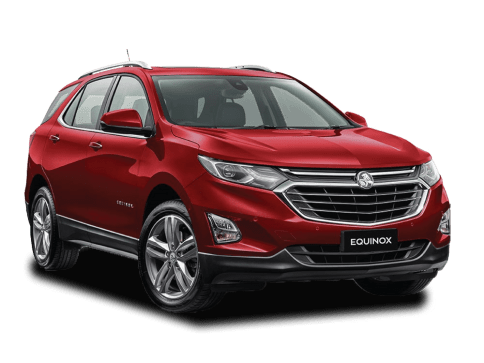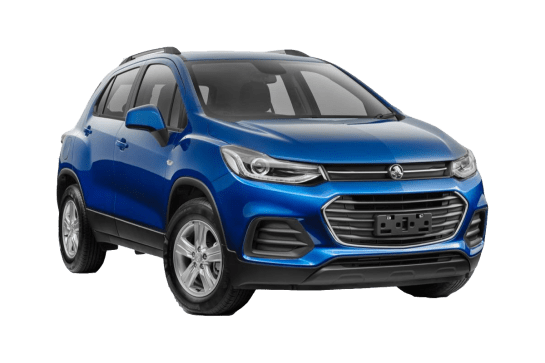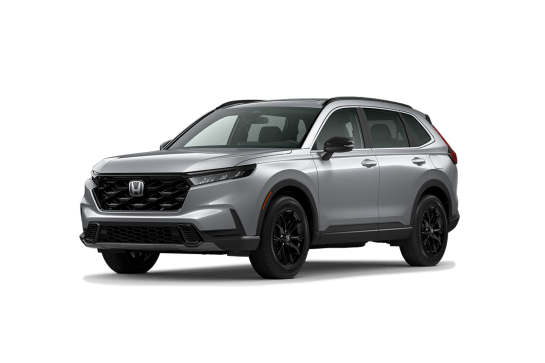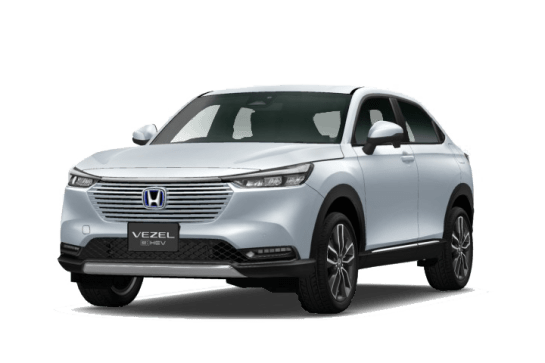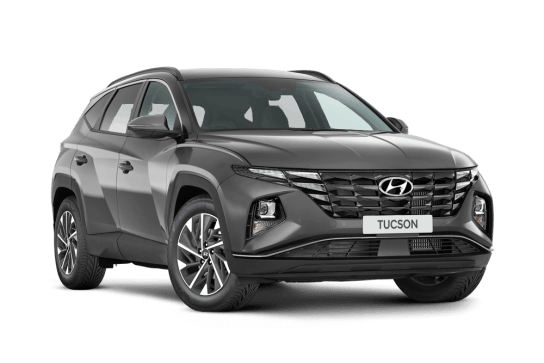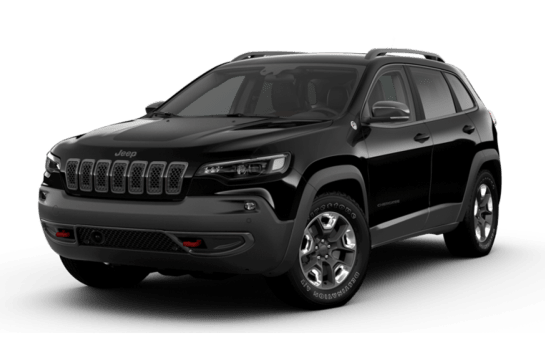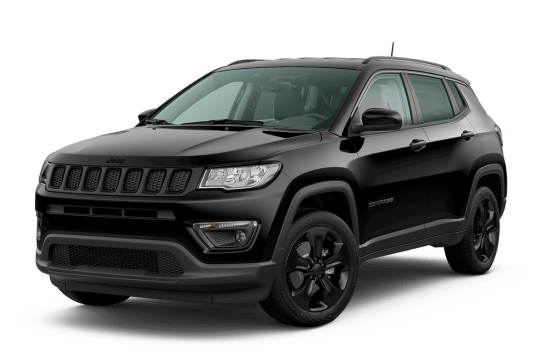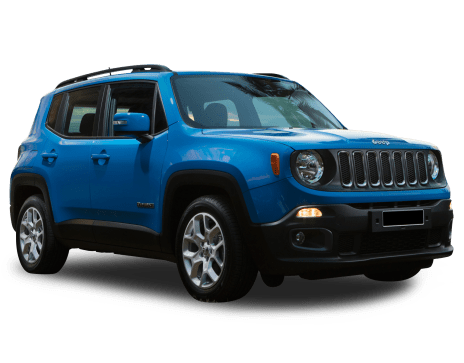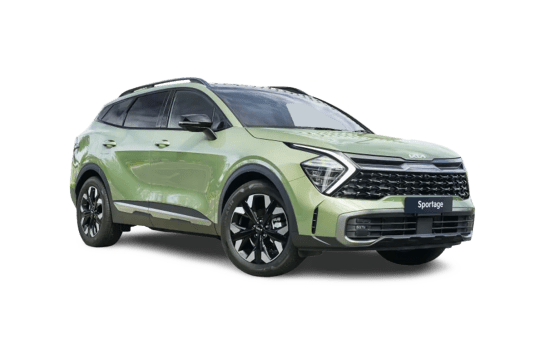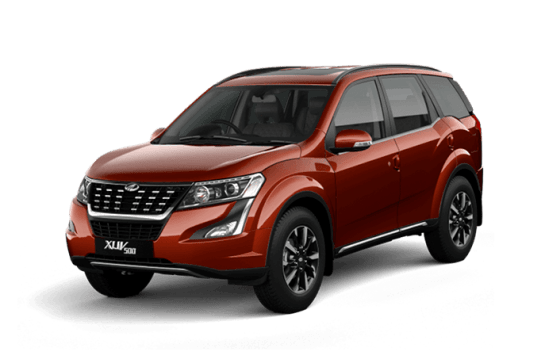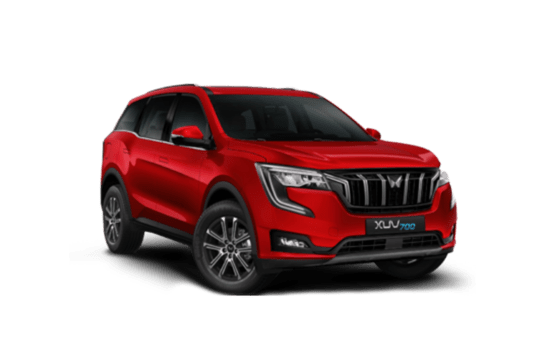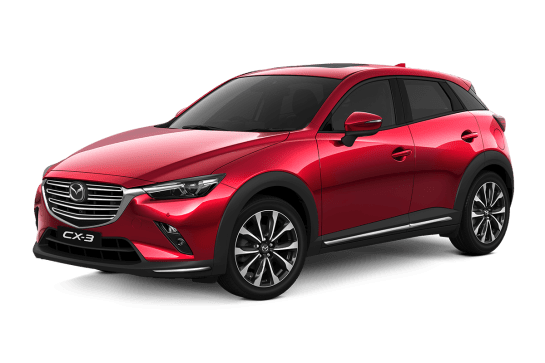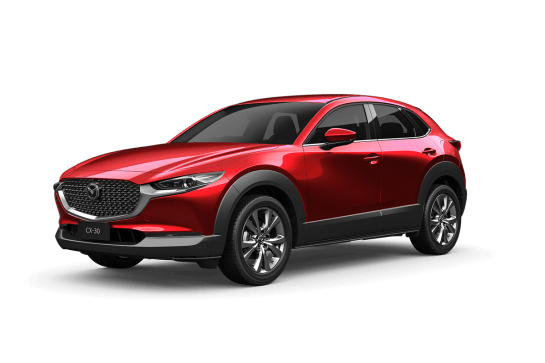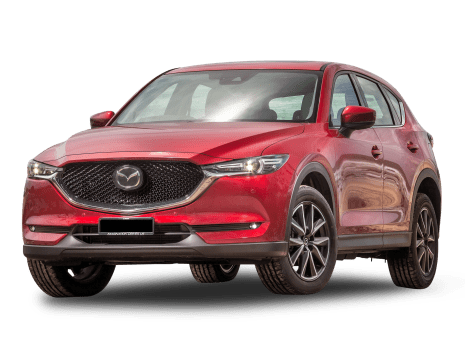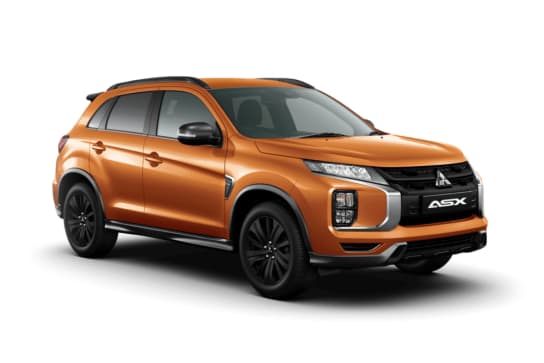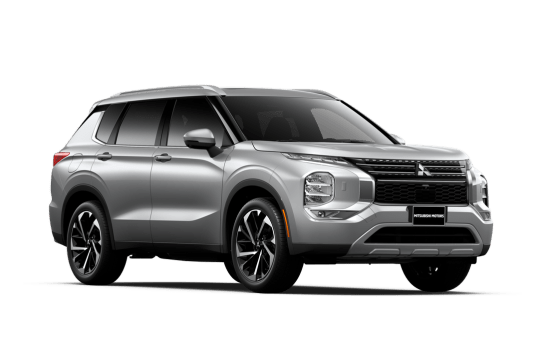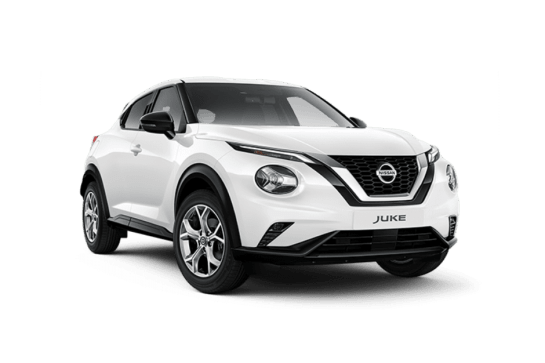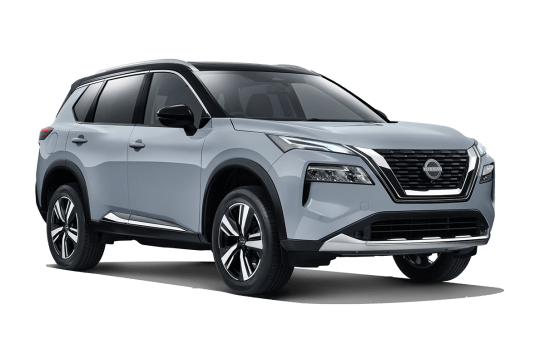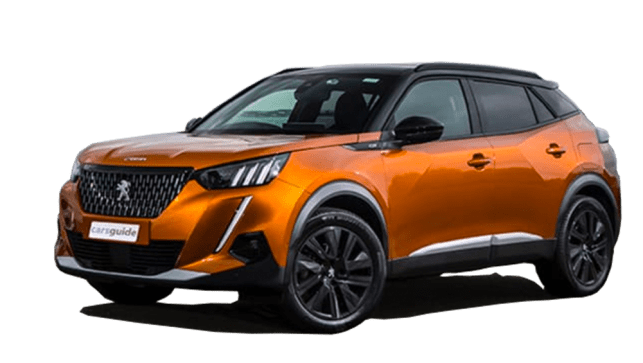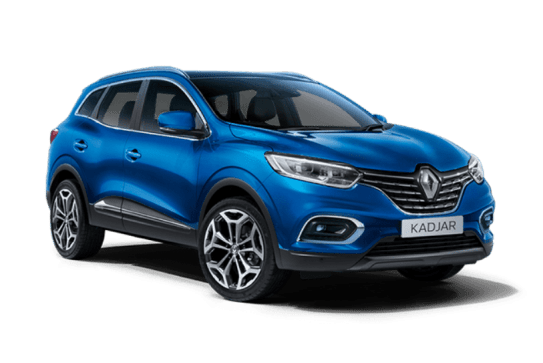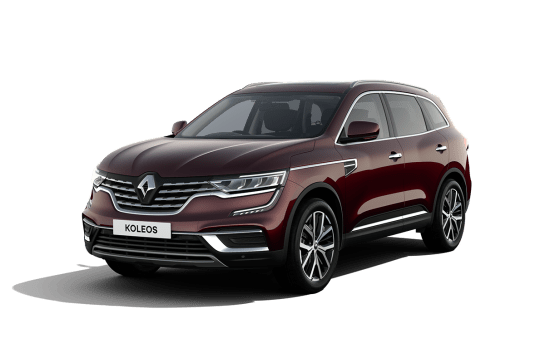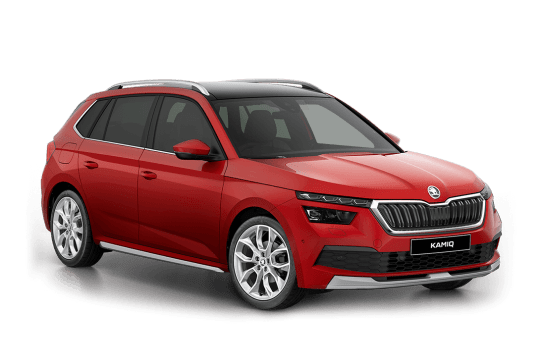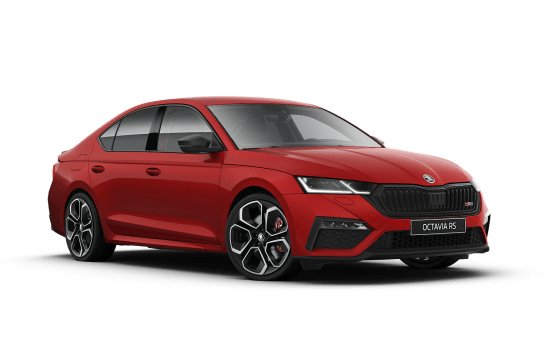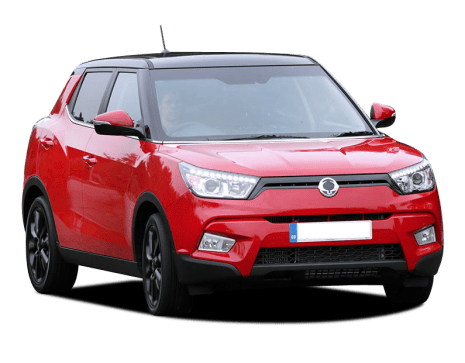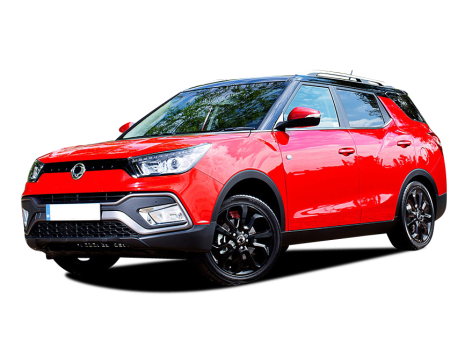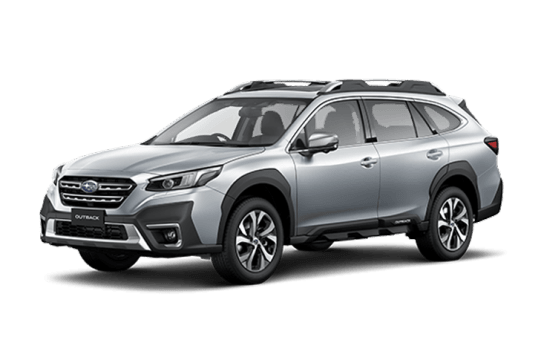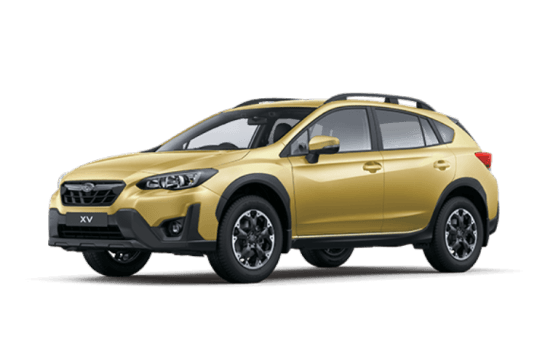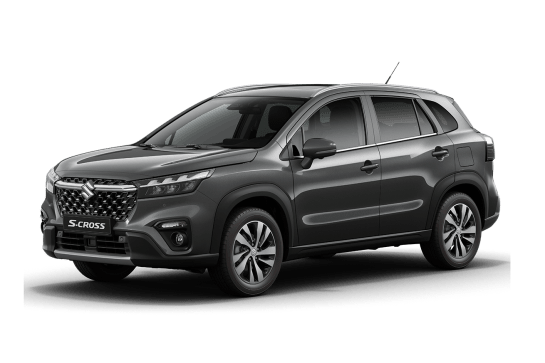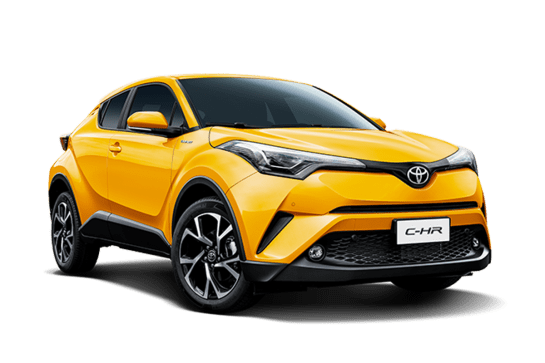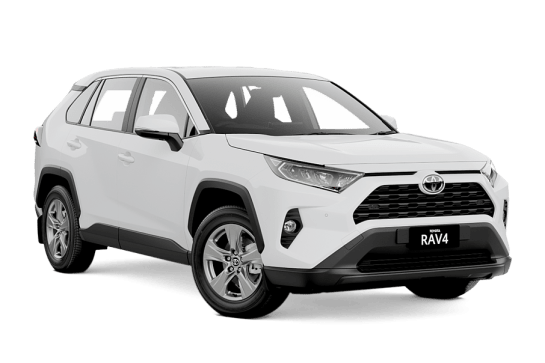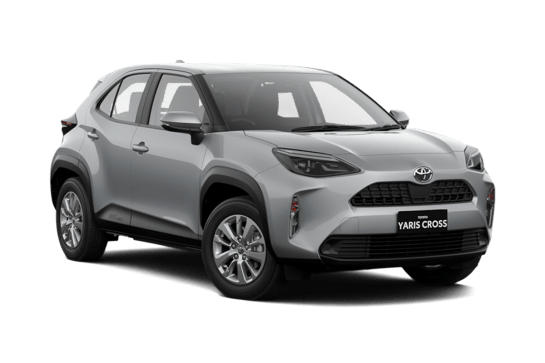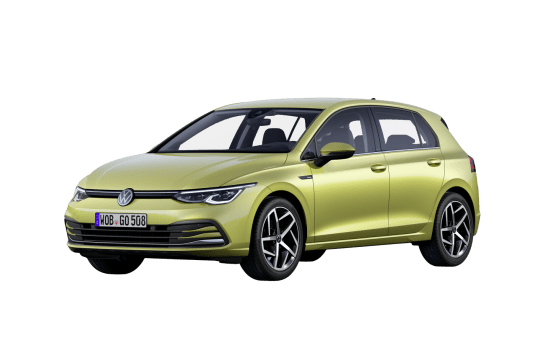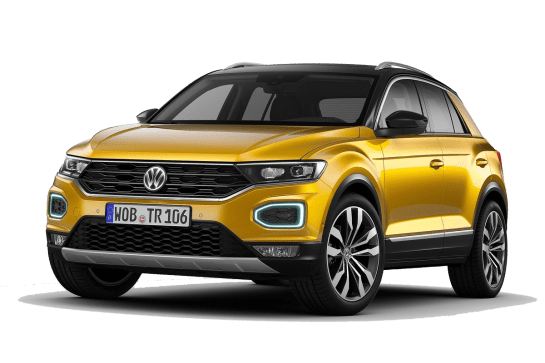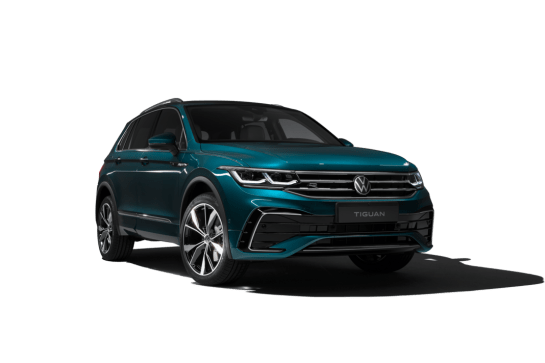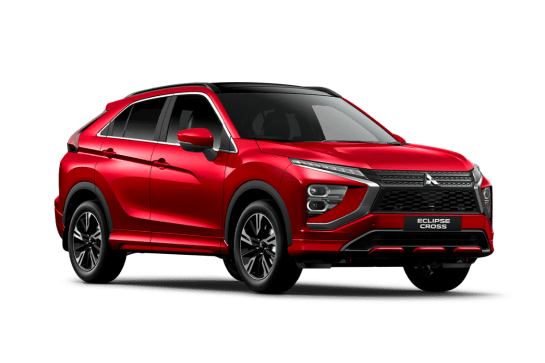
Mitsubishi Eclipse Cross VS GWM Haval Jolion
Mitsubishi Eclipse Cross
Likes
- Smooth between petrol and EV
- About 50km of real-world electric driving possible
- Three different trim levels available
Dislikes
- Too expensive for what you get
- Smaller boot and back seat than non-PHEV models
- Poor human-machine interaction
GWM Haval Jolion
Likes
Dislikes
Summary
Mitsubishi Eclipse Cross
The 2022 Mitsubishi Eclipse Cross has a new high-tech powertrain that allows it to run as an electric car, or run using the petrol engine, or even use both at the same time.
But the new hybrid SUV is not like a Toyota hybrid - because this one can be plugged in at home to recharge the batteries, and you should be able to get at least 50 kilometres of EV driving out of just a few dollars worth of electricity.
We’re talking about the new 2022 Mitsubishi Eclipse Cross Plug-in Hybrid EV, or PHEV as we’ve called it in the past. The brand has renamed it to include both ‘Hybrid’ and ‘EV’ in the name because, well, it reckons those terms have a bit more cut-through today than when the company first launched its Outlander PHEV back in 2014.
But with the new Eclipse Cross PHEV variants attracting a huge premium over the regular petrol-turbo models, does the extra money buy you a better car? Let’s find out.
| Safety rating | |
|---|---|
| Engine Type | 2.4L |
| Fuel Type | — |
| Fuel Efficiency | 1.9L/100km |
| Seating | 5 seats |
GWM Haval Jolion
What springs to mind when you think of SUVs done dirt cheap?
Probably the GWM Haval Jolion and MG ZS from China. With prices starting from the low-to-mid 20s, they have dominated the bottom end of the small SUV segment for the best part of this decade.
Now there are so-called “all-new” versions of each, promising more than just low prices. But as hybrids nearing $40,000? And up against cracking hybrid alternatives like the Toyota Corolla Cross, Hyundai Kona and Honda HR-V?
Read more about
- Big update for cut-price Chinese electric car: Will this facelifted version of the 2025 GWM Ora small electric hatch revealed in China improve GWM's chances against the 2026 BYD Dolphin and MG4?
- 2025 MG HS Super Hybrid pricing confirmed for Australia: 2025 BYD Sealion 6, GWM Haval H6 GT PHEV and Mitsubishi Outlander PHEV rival up to $16,000 more expensive than petrol-powered version
- A lack of ambition by 'legacy' car brands like Toyota and BMW will hand Chinese brands like BYD, Zeekr and GWM victory in Australia | Opinion
We’re here to find out if you’ll be thunderstruck by the most-expensive Jolion and ZS ever. Let’s go!
| Safety rating | |
|---|---|
| Engine Type | — |
| Fuel Type | Hybrid with Premium Unleaded |
| Fuel Efficiency | 5.1L/100km |
| Seating | 5 seats |
Verdict
Mitsubishi Eclipse Cross7.4/10
The Mitsubishi Eclipse Cross Plug-in Hybrid EV is an interesting inclusion for the brand, especially as it is typically considered a ‘value player’ in the market.
But with negligible real-world fuel consumption benefits if you drive beyond the limited EV range and a high price premium over the non-PHEV models, it’s important you see if the sums add up for your particular needs.
Primarily going to use the car for running around town? Cool. Think the 50-ish-kay EV range will work for you and make you happy? Amazing. Sold on the look of the car? Hat tipped.
But let me say this - if you are considering the Eclipse Cross PHEV, there are some alternatives you should also have on your list, including the MG HS PHEV, the Hyundai Ioniq PHEV, Kia Niro PHEV, and - the one I’d buy - a Toyota RAV4 Hybrid. For me, plug-in hybrid tech is a bit of a halfway house, in most instances offering too high a price premium for the range you’re getting to drive electric. Heck, a Kona Electric isn’t much more than the top-spec Exceed PHEV, and I’d have that if I wanted a real day-to-day EV experience.
GWM Haval Jolion/10
Picking a winner isn’t difficult, because the MG tops the GWM overall.
That's because it offers more performance, more refinement, more sophistication, more cargo space and far less lip from the advanced driver-assist systems.
Though not the best by some margin, the ZS is one of the most improved SUVs of 2025 – at least in Hybrid+ guise.
However, that MG continues to discount it so heavily is a worry, because that can impact resale values.
Which is ironic, because unlike the Jolion, the MG is now one that you don't have to buy just on low price alone!
GWM Haval Jolion Ultra Hybrid
| Likes | Dislikes |
| Powerful engine | Nuisance ADAS interruptions |
| Great back seat | Jittery ride |
| Easy steering | Distracting touchscreen operation |
MG ZS Essence Hybrid+
| Likes | Dislikes |
| Value proposition | No reach-adjustable steering |
| Refined interior | Some road/tyre noise intrusion |
| Decent dynamics | Minor equipment anomalies |
| Model | Overall score |
| GWM Haval Jolion Ultra Hybrid | 6.1/10 |
| MG ZS Essence Hybrid+ | 7.5/10 |
Design
Mitsubishi Eclipse Cross
You’re going to be able to tell the PHEV model from its more conventional counterparts by those oversized ‘Plug-in Hybrid EV’ badges on the front doors, and if you want to tell those behind you what you’re driving, there’s also a ‘PHEV’ badge there, too. Wait, wasn’t the plan to do away with the term ‘PHEV’, Mitsubishi?
But aside from that, the outside features just the different 18-inch alloy wheels (which are the same on all PHEV models, no matter the cost - I think that’s a bit lame, because if I’m spending $7500 on the Exceed I’d like a different wheel design!). Oh, and the Aspire and Exceed get that different lower front splitter, too.
Plus the PHEV has two fuel filler doors - one on each side of the car over the rear wheels. The driver’s side one is the EV charging ports (x2 - detailed below), and the passenger’s side one is for the petrol. Note: while the EV port is push-openable, the petrol cap still requires you to lift a lever in the driver’s footwell.
It may be categorised a small SUV but at 4545mm long, riding on a 2670mm wheelbase, 1805mm wide and 1685mm tall, it’s big for its boots. The popular Mazda CX-5 is only 5mm longer, and it plays in the midsize SUV segment!
Inside there are some design differences, with a specific gear joystick-style selector, and a different instrument panel.
It is impressive how the brand has managed to shoehorn a petrol engine, two electric motors, a battery pack and more into the car, but there are some practicality implications. Read about them in the next section.
GWM Haval Jolion
If you’re reading this from outside of Australia and New Zealand, you’ll likely recognise the current Jolion hybrid variants as simply updated versions of the Jolion Pro.
This means the GWM isn’t as new as it looks, because the Jolion Pro is actually as old as the regular previous Jolion, meaning the design is going on to five-years old now, and it continues in facelifted form. In fact, the Jolion Pro is a separate model altogether in China, badged as the Chitu. Watch the CarsGuide video comparison to hear how that name is pronounced. It certainly would not fly in Australia!
Whichever name you know this SUV by, it remains too narrow-tracked, with the wheelarch overhang looking like an oversized frock over skinny legs. Frumpy.
That said, the silhouette is a bit more rakish than the regular Jolion’s, while some of the latter’s visual trademarks carry through, including the vertical LED lighting signatures, bold grille and balanced overall silhouette.
The ZS, on the other hand, is definitely an all-new design, and miles more attractive than the old tippy-toed model that never sat quite right on the road.
It carries MG’s current pinched-nose styling, which may seem a little too squished for some tastes, but the nose does connect with the latest, related MG3’s. Though neat and clean, the tail treatment has an incredibly generic appearance. It could belong on any mainstream SUV from Kia, Hyundai, Mazda or Volkswagen.
Which design is the more pleasing of the two?
Though the Jolion’s tracks at 1577mm (front) and 1597mm (rear) are actually 38mm and 37mm wider respectively, the ZS’ wheels better fill out their arches, giving it a more planted and harmonious look. And that’s despite the latter’s 3mm-loftier ground clearance, at 161mm.
As such, even though it may seem larger overall, the MG is in reality smaller in every main dimension except height, at 4430mm long, 1818mm wide, 1635mm tall and sitting on a wheelbase of 2610mm. This compares to the GWM's 4470mm length, 1898mm width, 1625mm height and 2700mm wheelbase.
| Model | Score |
| GWM Haval Jolion Ultra Hybrid | 6/10 |
| MG ZS Essence Hybrid+ | 7/10 |
Practicality
Mitsubishi Eclipse Cross
Up front, the cabin is a pretty smart place, with nice enough materials and finishes, and a few good storage options. There’s a cubby in front of the shifter, but oddly enough it doesn’t have a wireless charger (there are 2x USB 2.0 ports above) and isn’t quite big enough for a smartphone (even the smaller ones don’t fit there all that easily), and there are cup holders between the seats, a decent covered centre console bin, and door pockets large enough for bottles.
The PHEV models get a different instrument cluster dial for EV driving readout info, but all have the old-school 4.2-inch TFT colour display that lacks the size and usability of some rivals with larger info screens - the MG HS PHEV, for instance, has a 12.3-inch digital display, which shows you a lot more info than this tiny little screen does. Heck, there’s not even a digital speedometer in there - and you only get one if you buy the Exceed model, which has a head-up display (HUD).
That’s part of the problem with the way this car’s interface operates. If you want the most detailed information you need to use the touchscreen media system, but that negates the usability of the media functions. On multiple occasions I found myself switching between Apple CarPlay phone calls and searching for that particular driving info screen I found most useful (there are about 15 screens to choose from, and plenty of them are hard to decipher).
It’s a huge disappointment for a customer who might want to see all that detailed information but also listen to a podcast, answer a call, follow their phone’s mapping or just have anything other than the hybrid info come up on the infotainment screen. The screen itself - an 8.0-inch unit, with sat nav integrated into the top spec only - is fine, but small compared to today’s rivals.
In the back seat, there’s a compromise for cabin space. The leg room is good, but the seat has been bumped up to accommodate some of the electrical hardware and the petrol tank, meaning someone my size (182cm/6’0”) will find they’ve got enough room for their legs but not their head, and those even larger will really need to take care getting in and out. While pre-facelift examples of this car had a clever sliding second row seat, that’s gone. It was never a feature in any PHEV version, and undoubtedly the layout of the battery pack has something to do with that.
The double pane sunroof no doubt eats into the space in the rear to a degree as well, and in the Exceed it likely feels a bit more cramped because of the black headliner.
While three adults could potentially fit across the back row for very short trips, there are dual ISOFIX and three top-tether points for child seats. The Exceed is the one you want if you’re aiming to treat your rear-seat passengers right: it has heated rear outboard seats, rear directional air vents and two USB ports for charging - the ES and Aspire miss out on all that stuff.
Boot space is 359L (VDA) for PHEV models, which is a step down from the 405 litres (VDA) for the non-hybrid models. There is extra hardware under the floor, and you don’t get a spare wheel in the PHEV models either - instead there’s a tyre repair kit. For context, we only just managed to fit all three CarsGuide hard suitcases (124L, 95L and 36L) in the boot of the PHEV version, while it was far less of an issue in the non-PHEV.
Oddly, no model comes with a power tailgate.
GWM Haval Jolion
There's lots to like about the Jolion’s interior.
It offers an excellent driving position, aided – at last – by a steering wheel that adjusts for reach as well as height (unlike in the ZS), crisp and clear digital instrumentation that’s enhanced by an excellent head-up display, decent all-round vision and acres (relatively speaking) of space. That longer wheelbase sure does help.
GWM's designers have obviously worked hard to make this an appealing place to be as well, but perhaps not where you may expect.
Deep windows and that long sunroof let in loads of light for an airy ambience; the simplicity of the horizontal dashboard remains contemporary and attractive half-a-decade on; storage borders on staggering, including in the hungry door cards, centre armrest bin and lower console; and the fit and finish is above reproach.
Plus, the front seats are sufficiently comfortable (initially at least), the ventilation is effective and that 12.3-inch touchscreen sits loud and proud above a row of actual climate-control buttons. All’s looking pretty promising in here.
However, there are some very annoying things about this (and every) Jolion’s interior, and they begin even before we step inside.
The only way to enter the car keylessly – as in, fob in purse or pocket, as is the preferred method for most people – is via the driver’s side. Driver first, so kids, the elderly or your hot date must wait vulnerably by the kerb, while the driver faffs about.
Once sat inside, you'll notice that most vehicle controls and functions are within the central touchscreen. And while it is slick in operation and extremely clear in resolution, GWM hasn’t bothered to switch the fast-action icons – including Home and electronic Climate switches – over to right-hand drive. So, everything is a stretch for both eyes and an arm to the top left side of the big 12.3-inch display. Does GWM test these out beforehand?
Yet an actual, consequential problem is that the driver's eyes are off the road for moments at a time, which is an unacceptable hazard, prompting an over-eager driver monitor to screen and sound jarring alerts –regularly and annoyingly, further distracting the driver. Flummoxing.
Also, accessing some of the stuff within the touchscreen requires two or three menu dives, meaning that, again, the driver is distracted. And then, again, the driver monitor begins its driver-berating bongs.
You can turn this off for the duration of a journey, but the system resets to default on. And why should you need to extinguish important advanced driver-assist systems? There seems to be no permanent way around this idiocy.
Additionally, you might notice the lack of a physical volume button for the audio/multimedia system (except for the toggle on the steering-wheel spoke), further necessitating sub-menu explorations. Good luck if you're prone to motion sickness.
Nor is there DAB+ digital radio, wireless for Apple CarPlay/Android Auto (same applies to the ZS), or USB-C ports (just USB-As), further betraying the Jolion’s real age inside. And, after a spell, the front seats may start to feel flat and achy. Plus, the heating elements are only for bottoms.
However, all is not lost, because the Jolion’s back row is tops.
Access is easy. Leg and shoulder room is generous. And the backrest and cushion are inviting and comfy. Noticeably more so than in the comparatively barren ZS.
And lots of nice details abound, like one-touch power window lifters, a folding centre armrest with cupholders, and LED overhead lighting. All are missing in the MG. Plus the Jolion ushers in more USB-A ports and additional storage.
A mix of good and not-so-good in the GWM's passenger compartment, then. But what about the ZS?
First impressions are reassuringly normal. You can enter from either side of the SUV without pressing a key fob, and once ensconced on soft yet supportive front seats, the MG’s newness is immediately apparent.
This is a much more modern and user-friendly dashboard experience, with easy-access buttons for the (also 12.3-inch) central touchscreen, where the sub-menus are fast to figure out and use. Even selecting gear is better using a quaintly shaped T-bar lever instead of the GWM's round selector.
Even after a long spell in them, the ZS’s bolstered front seats feel as if they’re hugging you, and – in Essence guise at least – they are more attractively finished in their pattern and materials. In fact, the general ambience and quality seems an entire class above the GWM.
To that end, the chunky flat-bottom steering wheel gives off very German vibes, as do the very-BMW-style instrumentation graphics, which are smart and colourful and also contemporary.
But you’ll soon be missing the Jolion’s head-up display and reach-adjustable steering column. And you’ll realise that storage isn’t as plentiful.
And the MG’s back-seat area is also compromised.
Yes, it remains comfortable and spacious, but the Jolion does both better out back. There is noticeably less legroom, the cushion seems a bit flatter and why would MG deny passengers a centre armrest and cupholders? They must fight over a single USB-C port and fumble in the dark as the overhead lighting has gone AWOL.
Oh well. The ZS does feel better finished, with nicer materials. And there can be no question about which makes for a better family SUV further back.
You cannot fold the rear seatbacks remotely from standing outside in either contender. But, with 443 litres available with all seats in situ versus just 255L, the MG’s cargo capacity clobbers the GWM's, nearly doubling the amount of space available. In fact, in shallow hybrid guise, the Jolion is fully one-third smaller compared to the petrol-powered version, due to all the electrical gubbins underneath.
With the backrests dropped, the MG’s boot opens up to a handy 1457L, in contrast to the GWM's tight 916L. Plus the ZS also provides additional under-floor storage. It is no contest.
But neither offers a spare wheel, just a tyre mobility kit, which shows disregard for Australians, especially out in rural areas. There is no excuse. If Toyota can put one in its hybrids, others can too. This should be a non-negotiable.
| Model | Score |
| GWM Haval Jolion Ultra Hybrid | 6/10 |
| MG ZS Essence Hybrid+ | 8/10 |
Price and features
Mitsubishi Eclipse Cross
The 2022 Eclipse Cross PHEV line-up is expensive compared to the petrol-turbo models.
The ES AWD has a list price (all prices MSRP, before on-road costs) of $46,490, while the mid-spec Aspire costs $49,990 and the top-end Exceed lists at $53,990.
I know they’re not like-for-like in every instance - the ES and Aspire petrol-turbo models are 2WD, not AWD, for example, and there are some specification differences, too - but the price jump from each respective non-PHEV version is $15,500 (ES), $14,250 (Aspire) and $12,500 (Exceed).
Yikes.
You’d really, really have to want the EV driving experience to justify that additional expenditure, right?
Here’s a rundown of the specifications across the three PHEV grades.
Standard for the $46,490 ES grade are 18-inch alloy wheels, LED daytime running lights, halogen headlights, keyless entry and push-button start, cloth interior trim, manual front seat adjustment, an 8.0-inch touchscreen media system with Apple CarPlay and Android auto, a reversing camera, a four speaker stereo, digital radio and a rear cargo blind.
Step up to the $49,990 Aspire and you score LED headlights and fog lights, a lower body kit, heated front seats, faux-leather and microsuede trim, auto wipers, adaptive cruise control, an eight-speaker stereo, surround view camera, front and rear parking sensors, and an array of safety equipment that we’ll cover off in the safety section.
Choosing the range-topping $53,990 Exceed model nets you leather seat trim, a heated steering wheel, a head-up display - making it the only grade with a digital speedo! - as well as sat nav, a dual pane sunroof, and a black headliner in the cabin.
GWM Haval Jolion
So, how expensive are they really?
The Jolion Ultra Hybrid (known elsewhere in the world as the Jolion Pro due to its unique styling) is listed from $38,990 drive-away, while the ZS Essence Hybrid+ officially kicks off from $36,990 drive-away. Just $2000 separates the two.
But don’t worry, GWM and MG haven’t lost all perspective, because both are jam-packed with features, including LED headlights, artificial leather upholstery, electric and heated front seats, digital instrumentation, a 12.3-inch touchscreen, a 360-degree view camera, adaptive cruise control, a panoramic sunroof, a connected services app and 18-inch alloy wheels.
But there are differences too, like a ventilated driver’s seat, a powered front passenger seat, a wireless phone charger and a head-up display found only in the Jolion Ultra, versus embedded satellite navigation and DAB+ digital radio that only the ZS Essence boasts.
Of course, these come on top of all the usual standard items, like keyless entry/start, climate control, Apple CarPlay/Android Auto, airbags all round and advanced driver-assist safety. We dive deeper into these cars’ safety later on.
To find similar specification highs in rivals like Corolla Cross, Kona and HR-V hybrids, you’re already in the low-$40K bracket, or otherwise you’ll need to step down a class to smaller SUVs like the Chery Tiggo 4 hybrid and Toyota Yaris Cross hybrid.
However, we do need to talk about MG’s pricing tactics.
Worryingly, there has been heavy discounting on ZS hybrid for a while now, with some promotions at over 10 per cent off, which is bad news for existing buyers who pay full whack, as this may affect resale values. To a lesser extent, others, including GWM, do this regularly as well. Our advice is to haggle hard on price and never pay full retail.
| Model | Score |
| GWM Haval Jolion Ultra Hybrid | 7/10 |
| MG ZS Essence Hybrid+ | 7/10 |
Under the bonnet
Mitsubishi Eclipse Cross
The plug-in hybrid version runs a non-turbocharged 2.4-litre Atkinson cycle petrol engine producing just 94kW and 199Nm.
Meagre outputs, but the petrol unit is backed by two electric motors - the front motor has outputs of 60kW/137Nm, while the rear motor produces 70kW/195Nm. It’s all controlled by a single-speed transmission.
There is no ‘combined power output’ figure, but there is a 13.8kWh lithium-ion battery pack as part of the equation as well.
The engine can power the battery pack in series hybrid driving mode, so if you want to top up the batteries before you get to a city, you can. And there is regenerative braking, of course. More on recharging in the next section.
GWM Haval Jolion
On paper, both are somewhat similar series-parallel hybrids, combining a modest 1.5-litre engine with an electric motor, to drive the front wheels via a special hybrid transmission.
In the Jolion’s case, we’re talking about a 70kW/125Nm 1.5-litre four-cylinder petrol engine and a 115kW/250Nm electric motor, making a total of 140kW of power and 375Nm of torque.
The MG, meanwhile, employs a 75kW/128Nm 1.5-litre four-cylinder petrol engine and a 100kW/250Nm electric motor, for a combined 158kW and 465Nm.
Where the real differences in these hybrids lay is in mass. Tipping the scales at 1420kg, the ZS weighs a hefty 200kg less than the 1620kg Jolion, for a far-superior power-to-weight ratio of 111.3kW/tonne versus 86.4kW/tonne, meaning that the MG is usefully quicker off the line.
We recorded 8.1 seconds to 100km/h for the MG, compared to 8.9s for the GWM.
So, it’s a surprise to learn that the latter has better braked towing capacity, at 1300kg versus just 500kg for the MG. And the ZS’s torsion beam rear suspension design looks inferior on paper to the Jolion’s more-sophisticated multi-link independent rear end.
| Model | Score |
| GWM Haval Jolion Ultra Hybrid | 6/10 |
| MG ZS Essence Hybrid+ | 8/10 |
Efficiency
Mitsubishi Eclipse Cross
The Eclipse Cross PHEV has an official combined cycle fuel consumption figure of 1.9L/100km. That’s astounding, really, but you need to realise that the test calculation is only for the first 100 kays - there’s a really good chance your real-world consumption will be a lot higher, as you can only deplete the battery charge once before calling on the engine (and your petrol tank) to juice it back up.
Electric driving range is stated at 55km based on NEDC cycle testing, while the WLTP rating is a more realistic 45km. In our testing we fell between the two during our “fully charged” 100km run, in which the electric charge initially ran for 50km. But, over the 100km run, the dashboard info screen said the car used “82 per cent” electric driving, while somehow also showing 3.9L/100km for petrol consumption.
I did the numbers at the fuel filler, and the actual return was 4.5L/100km. That’s okay, but not nearly as spectacular as you might hope, and I’ve seen very close in a RAV4 hybrid - which in most instances is cheaper than the Eclipse Cross despite being bigger and, frankly, a lot better.
I also ran the car for a further 100 kays without plugging in, just to see what the ‘worst case scenario’ might be - and it wasn’t too bad, with the fuel consumption jumping to a real-world return of 5.5L/100km. But again, that’s worse than you’ll likely get with a RAV4…
When it comes to charging/recharging, there is available AC charging using a Type 2 plug that can fully recharge the battery in as little as 3.5 hours, according to the brand. DC fast charging with a CHAdeMO plug should fill from zero to 80 per cent in 25 minutes. Maximum charge input is 3.6kW.
Like me, you’ll want to do the maths to see what is going to be the most economical way to run your car - aside from just plugging it in at the office and hoping nobody notices.
A standard 10-amp household plug - which should take about seven hours to replenish the batteries - could cost as little as $1.88 to get back your circa-50km EV range - that’s based on overnight charging, off-peak, on an average 13.6c/kWh electricity price. Of course, if you’re considering a PHEV, you might have a solar array and the electricity could well be free. Good for you.
But remember, there’s more to it than just the electricity costs - you need to also consider the additional purchase budget required just to get into the PHEV model over a regular Eclipse Cross.
GWM Haval Jolion
On paper, the Jolion is not as economical as the ZS, as the official combined fuel consumption figures suggest, at 5.1 litres per 100km plays 4.0L/100km. These equate to 118 grams/km and 110g/km respectively.
Please do note that the ZS needs to drink from the more expensive 95 RON premium-unleaded bowser, compared to the Jolion’s taste for the standard 91 RON brew.
Now, if these numbers are to be believed, a driver could theoretically average nearly 1080km between refills in the GWM and over 870km in the MG. This discrepancy is likely due to the latter’s significantly smaller fuel tank, at 41L versus 55L.
However, during our week with these hybrids, their trip computers told a different story, with the ZS displaying 6.0L/100km and the Jolion a disappointing 8.3L/100km. Worse still, by the end of our testing, those numbers shot up to 6.7L/100km (MG) and a shocking 10.2L/100km (GWM), respectively.
Both were subjected to the same performance testing and other driving procedures. We can only surmise that the heavier Jolion’s less-powerful engine has to work harder than the ZS’s.
| Model | Score |
| GWM Haval Jolion Ultra Hybrid | 5/10 |
| MG ZS Essence Hybrid+ | 7/10 |
Driving
Mitsubishi Eclipse Cross
If you’re after that electric car thrill of near-silent, almost mind-blowing acceleration, the Eclipse Cross mightn’t be the right car for you
But if swift progress and the buzz you get from taking off from the traffic lights without any hesitation at all is more your thing, it could be great for you. And if you’re not quite ready to go “full EV”, then it’s probably something you’re considering.
The EV driving mode is the best driving mode in this car. You can run it just on the petrol engine to ensure you save your battery range, and you might choose to do that when you’re driving on the freeway and know you’re approaching an urban area where the EV goodness will be better used. Or you could have it so it's using battery and petrol power, and that’s where you’ll get maximum combined performance.
But running the car in the default, EV-prioritised mode means you will make the best of this powertrain's strengths, because - for the fifty odd kays you’ll get out of the battery - it’s pretty good.
It’s also impressive the way this powertrain dips between petrol engine, battery pack or both at higher speeds. When the battery range had depleted on my test drive, the engine kicked in almost imperceptibly, working to power the car and also generate more electricity for the battery pack. It then dipped out of petrol, back to battery, and so on and so forth, multiple times during my drive.
The best thing about the way it did so was that it was smooth. There is barely any vibration from the petrol engine, the transmission doesn’t have any gears to fumble with, and overall the refinement is really good.
There are drive modes - Eco, Normal, Snow, Gravel and Tarmac - and in my test I kept to Normal. I did fiddle with the regenerative braking reactiveness, though, using the paddleshifters to dial up or down the aggressiveness of the energy recoup system. It doesn’t feel as aggressive as some pure electric cars, but thankfully it has a decent pedal feel and progression when you apply the brakes yourself.
The steering is light and lacks feel, and doesn’t offer that much engagement or involvement. That might matter to you if you’re like me. I wish it was more fun. But at least it’s easy to park.
While the suspension is fine and comfortable on the highway, it can feel wooden and the ride is quite lumpy at low speeds. It never really feels all that well resolved for urban driving, which is a bit of a downer considering that’s likely where a car like this will spend most of its time
The tune of the suspension - being a bit firm at lower pace - surprisingly doesn’t have any payoff when it comes to cornering, as it lacks a bit of body control, shifting its weight side to side.
All in all it is a decent plug-in hybrid offering – and will be perfectly suitable to someone who wants some EV driving as a part of their lifestyle. It’s just a matter of doing the maths as to whether it will work for you.
GWM Haval Jolion
Let’s start with the GWM.
If you are familiar with the old Jolion, you'll instantly recognise that the new one is improved. It seems to be a bit smoother and quieter, though there appears to have been on mechanical changes accompanying 2024's facelift.
Up to a certain point, the hybrid powertrain offers strong performance, aided by the electric motor, which takes up much of the slack at lower speeds. At times, as with the MG, it runs purely as an EV, at up to about 50km/h. Hushed and refined.
Yet you also do notice the extra urge of electrification right up to about freeway speeds, with the motor adding extra oomph, for punchy overtaking and instant zip. The Jolion hybrid’s spirited performance is one of the car’s dynamic highlights.
Another positive is its handling poise on smooth roads, with the Jolion faithfully going precisely where it is pointed to. The steering feels quite sharp, and it corners well to boot, providing reassuring road holding as well as a welcome lack of rack rattle. The standard Kumho Solus 225/55R18 tyres seem to be a good fit here.
Despite a biggish turning circle of 11.5 metres, the GWM is easy to drive around town. Three steering modes are offered – Light (way too lifeless, yet nervous at speed due to the helm’s directness), Comfort (fine) and Sport (heavy, like stirring porridge, and without any feel/feedback).
The Jolion’s suspension, however, needs a lot more fine-tuning to work properly on Australian roads.
It still seems a bit loose and clangy, and that means that it can feel like a handful through tighter corners. Worse still, the ride feels jittery and lurchy on anything but the smoothest of roads, so it’s not very comfortable. You're constantly aware of every bump you go over. A couple of times, insufficient suspension travel saw us bottom-out as well.
This vies with the Chery Tiggo 4 as the most agricultural suspension set-up I've experienced in a new vehicle in 2025.
Like a lot of other hybrids including with the MG, the GWM's brakes can feel snatchy and artificial, and there’s also too much road noise coming through in both of the SUVs here. This, combined with the unsettled ride, comes as a surprise, given the advanced rear suspension specification. If you expect sophistication, you'll be sadly let down.
But the biggest issue is the Jolion’s advanced driver assist system (ADAS), which is just too nervous and intrusive.
Along with the aforementioned driver attention monitor all-too-regularly sounding off, creating frustration and ultimately fatigue, the adaptive cruise control needs more fine tuning, since it is too easily flummoxed by minor things.
Here's our example. Through even gentle curves on freeways, or when it detected a parked or slower vehicle in an adjacent lane as a (non-existent) collision risk, it rapidly washed off speed and even applied sudden braking automatically, creating a very real hazard for vehicles travelling directly behind (as well as stress for the car's occupants). Likewise, the lane-keep system’s erratic tugging at the wheel when it believed the car was about to stray was also tiring.
Where is the nuance here? Bordering on being dangerous, this behaviour is unacceptable. Australian ADAS road testing is required.
In stark contrast, there are few if any areas where the ZS hybrid isn’t superior from behind the wheel.
Like the GWM hybrid, step-off acceleration feels muscular, but the powertrain combined seems significantly gutsier and yet less coarse, with a willingness to rev more freely. Throttle response through its three forward gears (compared to the Jolion’s two-speed CVT set-up) is also faster and more immediate, and it is certainly smoother to boot.
A quicker 0-100km/h time only tells half the story. Although not quite as reactive as the GWM's, the MG’s steering feels more connected, providing both a tighter turning circle around town for easy parking and instant manoeuvres, as well as a more relaxed attitude out on the larger suburban roads that will likely be this car’s main habitat in Australia.
At highway speeds, on Giti GitiComfort 215/50R18 tyres from China, the ZS’ handling feels planted and direct, courtesy of firmer yet somehow suppler suspension, bringing in greater body control and more discipline, without the excessive movement, pitching and fatigue than blights the Jolion on our more challenging bitumen.
And you avoid being subjected to the annoying, condescending ADAS insisting that you are too distracted, heading for imminent collision, or are about to stray from your lane. The MG seems to be a much better tuned vehicle for Australia than the Jolion is, and that's really prevalent when you're driving back to back.
Probably the best thing about the ZS, though, is how much more comfortable the ride is. While quite firm and even bouncy over bumps on occasion, it is not jerky nor fidgety, and the suspension feels better tied down. It's just a more solid feeling piece of engineering. Who needs a multi-link rear end?
That all said, the MG is far from being a driver's SUV, as it lacks the steering poise, dynamic flair and supple ride of the best of them, but it is much more enjoyable and reassuring to drive than the Jolion, or the dire previous-shape ZS.
| Model | Score |
| GWM Haval Jolion Ultra Hybrid | 5/10 |
| MG ZS Essence Hybrid+ | 7/10 |
Safety
Mitsubishi Eclipse Cross
All Mitsubishi Eclipse Cross models have been awarded a five-star ANCAP crash test safety rating based on 2017 testing for the pre-facelift model.
The range has increasing levels of safety technology the more you spend, but all variants have forward autonomous emergency braking (AEB) with forward collision warning (operates between 5km/h and 80km/h) and the AEB includes pedestrian detection (between 15km/h and 140km/h).
Standard on all grades is a reversing camera, rear parking sensors, seven airbags (dual front, driver’s knee, front side, side curtain for both rows), active Yaw control, stability control, and anti-lock brakes (ABS) with brake force distribution. Lane departure warning is standard too.
Spend up on the Aspire for adaptive cruise control, blind-spot monitoring, rear cross-traffic alert, and front parking sensors. From Aspire up to Exceed, there’s the addition of the brand’s Ultrasonic Misacceleration Mitigation System, which can dull throttle response to prevent potential low speed collisions.
No speed sign recognition is available, and therefore no smart cruise control either. Plus there is no lane centring system fitted either, and nor is there a driver attention monitoring system, so it’s falling behind on the tech front.
The Mitsubishi Eclipse Cross is built in Japan.
GWM Haval Jolion
So, if you were to guess which of these two scores a four-star ANCAP rating, you’d probably go for the older design, right? Wrong!
The ZS has achieved just four stars, against five stars for the Jolion – though that’s for the original model launched back in 2020 and tested in 2022, so may not rate so highly under the stricter 2024 requirements that the MG had to meet.
And both bring a high level of advanced driver-assist systems – or ADAS – to the table, including Autonomous Emergency Braking (AEB) with pedestrian and cyclist detection, rear-cross-traffic alert, blind-spot alert, lane-keep assist systems, a driver fatigue monitor, auto high beams, traffic sign recognition and even a vehicle-exit warning.
Both the Jolion and ZS’s AEB work between 5km/h and 150km/h (car-to-car), 5km/h and 80km/h (cyclists, pedestrians) and 60km/h and 150km/h (lane-support systems), according to ANCAP.
Additionally, you’ll find parking sensors, hill-start assist, electronic stability and traction controls, anti-lock brakes with brake assist, electronic brake-force distribution and front/side/curtain airbags. But only the Jolion includes a front centre airbag. Plus, two ISOFIX latches in the rear seats and a trio of child-seat tether anchor points are also fitted.
Which is safer, then? While the MG’s four stars obviously doesn’t look as good as the GWM's five, the latter’s distracting and frankly fatiguing ADAS interruptions is a black mark against it.
| Model | Score |
| GWM Haval Jolion Ultra Hybrid | 7/10 |
| MG ZS Essence Hybrid+ | 7/10 |
Ownership
Mitsubishi Eclipse Cross
There’s a huge 10 year/200,000 kilometre warranty on offer - but it’s valid if you maintain your car with Mitsubishi’s dedicated dealer service network over the 10 years/200,000km timeline, or else you get a five-year/100,000km plan.
But while the rest of the car will be covered by that decade-long warranty if you service it with Mitsubishi, the battery is only covered for eight years/160,000km, no matter where you have the car serviced.
Maintenance is due every 12 months/15,000km. But just a note - the more complex powertrain means higher service costs than the regular turbo-petrol versions. The annual fees are: $299, $399, $299, $399, $299, $799, $299, $799, $399, $799; so an average cost of $339 for the first five years, or $558.90 per visit over 10 years/150,000kn.
Included for customers who service their car with the brand is four years of roadside assist.
Do you have questions over reliability, issues, concerns, recalls, automatic transmission problems, or anything else of that ilk? Check out our Mitsubishi Eclipse Cross problems page.
GWM Haval Jolion
Officially, both offer a seven-year/unlimited-kilometre warranty with service intervals at every 12 months or 15,000km, and that’s a decent wedge of coverage in anybody’s language.
But, if you choose to service your ZS at an MG dealership, that stretches out to a 10-year/250,000km warranty. Only Nissan beats that at the time of publishing!
Plus, while the GWM also includes five years of roadside assistance and capped-price servicing (averaging to about $405 annually), the MG bumps both of those up to seven years (with an annual service cost of under $300), underlining a more complete ownership proposition.
Which, in a nutshell, sums up the ZS against the Jolion.
| Model | Score |
| GWM Haval Jolion Ultra Hybrid | 7/10 |
| MG ZS Essence Hybrid+ | 9/10 |
